|
Tamarugo Conebill Conirostrum tamarugense Chilean name: Comesebo de los tamarugales |
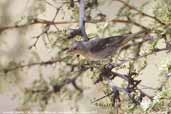 |
Pampa del Tamarugal National Reserve, near Iquique, Chile
February 2007As I was driving north along the Panamericana Highway and just before the turn-off to the site of the Battle of Dolores, I heard a high-pitched, chattery bird-song so I pulled off the road and discovered two Tamarugo Conebills one on either side of the road. The tamarugo trees were set about 10 to 20 metres from the road on both sides.
|
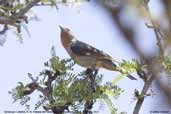 |
The birds were very active and it was extremely difficult to get decent photographs as they always seemed to be behind a trunk or branch of these extraordinary spiny trees. The trees seem to flourish in the Atacama desert. Apparently there is some underground water in this area. They were almost wiped out by the nitrate industry between about 1810 and 1930 when the trees were used as fuel for the extraction process. |
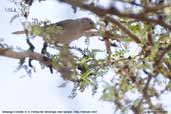 |
Fortunately, the Chilean government started replanting in the 1930s. The trees provide food for Leptotes trigemmatus caterpillars who provide food for the Tamarugo Conebill during the breeding season. Unfortunately, the trees also provide food for sheep and goats so there are often attempts to eradicate the caterpillars. |
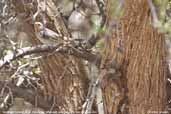 |
Outside the breeding season the birds migrate to the pre-cordilleran shrub zone in southern Peru and near Putre in Chile. Only described in 1972, it is classified as Vulnerable by Birdlife International who have an excellent page on the species here. |
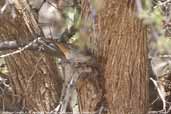 |
It s very similar to the Cinereous Conebill but has a rufous supercilium, a rufous bib and a rufous crissum. One of the main sources of information about this species is the article by Cristián Estades in the Wilson Bulletin, 108(2), 1996, pp. 268-279. available at SORA. |
|
|
|




